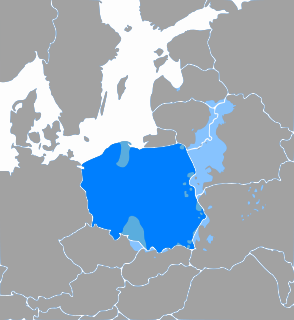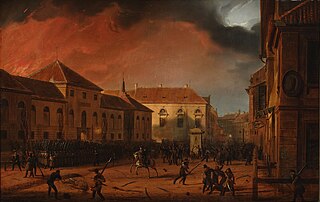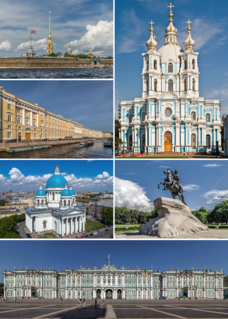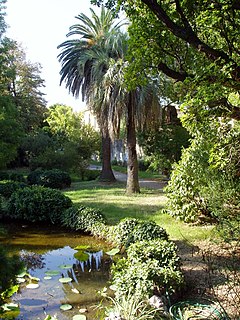
Warsaw is the capital and largest city of Poland. The metropolis stands on the Vistula River in east-central Poland and its population is officially estimated at 1.78 million residents within a greater metropolitan area of 3.1 million residents, which makes Warsaw the 8th most-populous capital city in the European Union. The city limits cover 517.24 square kilometres (199.71 sq mi), while the metropolitan area covers 6,100.43 square kilometres (2,355.39 sq mi). Warsaw is an alpha global city, a major international tourist destination, and a significant cultural, political and economic hub. Its historical old town was designated a UNESCO World Heritage Site.

The Royal Castle in Warsaw is a castle residency that formerly served throughout the centuries as the official residence of the Polish monarchs. It is located in the Castle Square, at the entrance to the Warsaw Old Town. The personal offices of the king and the administrative offices of the Royal Court of Poland were located there from the sixteenth century until the Partitions of Poland.

The Załuski Library was built in Warsaw in 1747–1795 by Józef Andrzej Załuski and his brother, Andrzej Stanisław Załuski, both Roman Catholic bishops. The library was the first Polish public library, the largest library in Poland, and one of the earliest public libraries in Europe.
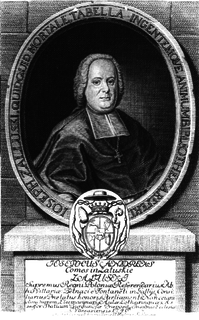
Józef Andrzej Załuski was a Polish Catholic priest, Bishop of Kiev, a sponsor of learning and culture, and a renowned bibliophile. A member of the Polish nobility (szlachta), bearing the hereditary Junosza coat-of-arms, he is most famous as co-founder of the Załuski Library, one of the largest 18th-century book collections in the world.

The National Library of Poland is the central Polish library, subject directly to the Ministry of Culture and National Heritage of the Republic of Poland.
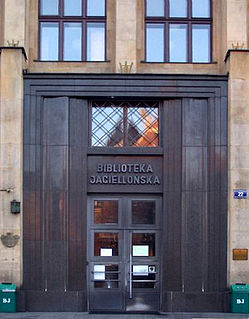
Jagiellonian Library is the library of the Jagiellonian University in Kraków and with almost 6.7 million volumes, one of the largest libraries in Poland, serving as a public library, university library and part of the Polish national library system. It has a large collection of medieval manuscripts, for example Copernicus' De Revolutionibus and Jan Długosz's Banderia Prutenorum, and a large collection of underground literature from the period of communist rule in Poland (1945–1989). The Jagiellonian also houses the Berlinka art collection, whose legal status is in dispute with Germany.

The destruction of Warsaw was Nazi Germany's substantially-effected razing of the city after the 1944 Warsaw Uprising. The uprising had infuriated German leaders, who decided to make an example of the city, which they had long since selected for major reconstruction as part of their planned Germanization of Central Europe.

Tylman van Gameren, also Tilman or Tielman and Tylman Gamerski, was a Dutch-born Polish architect and engineer who, at the age of 28, settled in Poland and worked for Queen Marie Casimire, wife of Poland's King John III Sobieski. Tylman left behind a lifelong legacy of buildings that are regarded as gems of Polish Baroque architecture.

The Library at the Royal Castle is a large building adjacent to the Royal Castle in Warsaw, Poland. It was built between 1779 and 1783 according to design of Dominik Merlini and Jan Chrystian Kamsetzer in order to accommodate the royal collection of books belonging to King Stanisław August Poniatowski, the last King of sovereign Poland.

The Kazimierz Palace is a rebuilt palace in Warsaw, Poland. It is adjacent to the Royal Route, at Krakowskie Przedmieście 26/28.
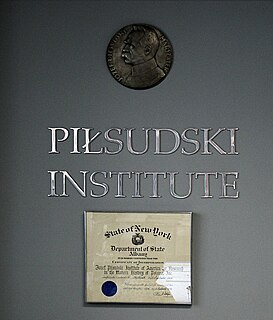
The Józef Piłsudski Institute of America was created in New York in July 1943. It is an archive, museum and research center devoted to the study of modern Polish history and named after the Polish interwar statesman Józef Piłsudski.
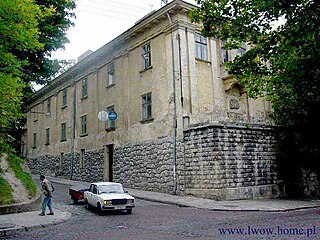
The Baworowscy Library was one of major Polish libraries, with thousands of books and historical documents. It was located in Lwow, and ceased to exist after World War II.

The Temple of Divine Providence, in southern Warsaw's Wilanów district, is one of the most important Roman Catholic buildings in Poland. The story of its construction began in the 18th century The Temple is meant to be a national and religious symbol for Poland. The Divine Providence complex comprises a Church of Divine Providence, a Museum of John Paul II and Primate Wyszyński, and a Pantheon of Great Poles.

St. Hyacinth's Church, named after Saint Hyacinth of Poland, is located in Warsaw's New Town at Freta Street 8/10.

Warsaw Public Library is one of the main libraries in Warsaw, and one of the largest in Poland.
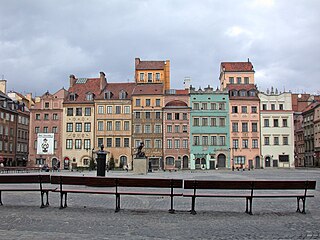
Museum of Warsaw is a museum in the Old Town Market Place in Warsaw, Poland. It was established in 1936.

Krasiński Library was a library in Warsaw, founded in 1844. During the German invasion and occupation of Poland, part of the building was destroyed and its collections were stolen, redistributed, or burned. Its surviving collections are now at the National Library of Poland.

Polona – Polish digital library, which provides digitized books, magazines, graphics, maps, music, fliers and manuscripts from collections of the National Library of Poland and co-operating institutions. It begun its operation in 2006 .

The Main Library of Cardinal Stefan Wyszyński University in Warsaw is the central research library of the Cardinal Stefan Wyszyński University in Warsaw.


